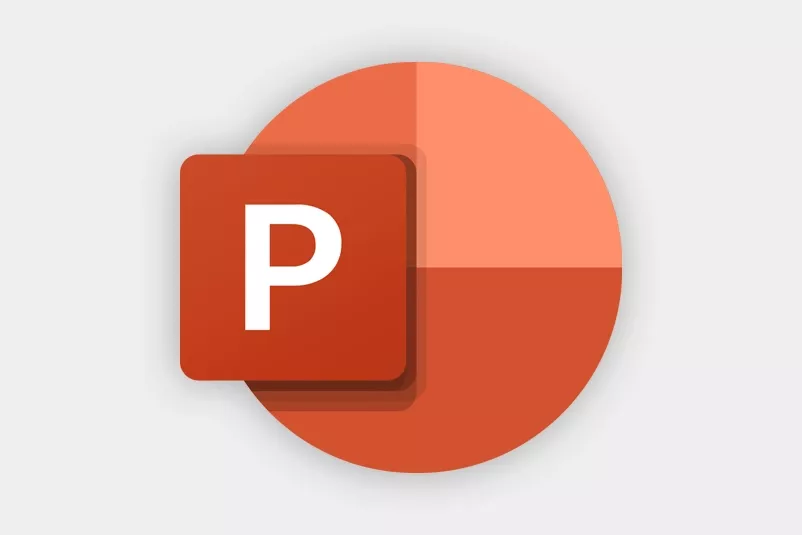My top tips for nailing your next PowerPoint slide presentation. By Fiona Sands, Designtastic


I’ve lost count of the number of times we’ve been asked, often at the last minute, if we could ‘tidy up some PowerPoint slides” for an important sales presentation. With no script, no idea of who the intended audience is or, in the most extreme cases, no idea why the presentation is being given in the first place, this can be quite a challenge! It’s also why, in the vast majority of cases, a ‘tidy’ slide pack still fails to engage an audience.
Whether you’re presenting in person or virtually, one of the most valuable business skills in your repertoire is the ability to give a presentation in an effective and engaging way.
Over the years I’ve learned that by thinking ahead and following a few simple dos and don’ts, your presentation will sizzle rather than fizzle out.
DO
Answer the problem
When preparing your presentation slides, always explain how your product or service addresses the audience’s pain points. Show that you can empathise with their concerns and provide a worthwhile solution.
Edit yourself
You could talk about your area of expertise forever on your slides, but please don’t! Sales presentations are meant to educate and intrigue. Give your audience enough information to pique their interest and then direct them to other resources, such as the company website or social media channels, for more information, or offer a more in-depth one-to-one discussion at another time.
Focus on the main message
When you are planning your presentation slides, ask yourself what you want the audience to remember from them, and structure the presentation to drive home that one over-arching main message.
Make it legible
Cramming text and graphics onto slides until they are illegible is the most effective way to make your audience glance at their watches. Ideally there should be no more than 20 words onscreen at any one time. Cut down full sentences to short, strong phrases (the only exception is quotations, which can be cited in their entirety) and try to start each sentence with a noun or verb (active voice).
Take unnecessary lines out of graphs, and include only relevant images. Making your slides legible also minimises distractions, allowing your audience to focus on your speech and your message.
Remember to KISS!
‘Keep It Short and Simple’. Limit yourself to one idea per slide and minimise the number of slides; a useful rule of thumb is one slide per minute.
Be consistent
Use the same style throughout your presentation. A collection of random text and graphics across your presentation slides that bear no relation to each other from one slide to the next will not inspire your audience’s confidence. A slick presentation that’s consistent from beginning to end is a sure-fire way to keep their attention.
Relate to the audience
Use personal stories, examples and custom demos to help your audience relate to you. Their problem should be your problem, so don’t be shy about letting the audience know you understand their concerns.
Rehearse, rehearse, rehearse
Don’t attempt to wing a presentation. You need to rehearse and then warm up. Feeling comfortable and well-practised will help calm your nerves and prevent fumbling. Whether you’re on stage or on screen, make sure you practise with the same technical set up that you will use when you deliver the presentation. If you're presenting virtually, adjust your lighting so your audience can see you clearly and use a professional background image.
Follow up
When the presentation has ended, be sure to follow up with any individuals you met before or after the presentation.
DON’T
Try to be funny if you’re not
While well intended, humour doesn’t always translate, particularly if it’s not practised. Instead, focus on delivering an impactful, engaging message and you will succeed every time.
Leave your personality backstage
The audience wants to feel like they are doing business with an actual person rather than a company. That human element has to come from you. Showing personality onstage lets the audience see the person behind the company, and makes for a more engaging presentation.
Read your slides
Do not ever do this. Even the most experienced presenter sounds monotonous and boring when reading slides. Plus, breaking eye contact with your audience is a guaranteed way to lose their interest. Practise, but don’t memorise and don’t read word for word. If you mess up or stumble, that’s okay. If anything, it brings out that human element the audience is seeking. Try to look directly into your computer's camera if you're presenting virtually, not at the screen. This will make your audience feel you are making eye contact with them.
Fear white space
Resist the temptation to crowd every pixel with text or pictures. By eliminating clutter and keeping ‘white space’ on your slides your audience will be able to pick out the important information straightaway and turn their attention back to you, the presenter, quickly.
Waste their time
People attend presentations with a specific objective in mind: to learn. Don’t waste their time by talking about irrelevant information. Being succinct is your responsibility as a presenter and something your audience will thank you for.
Forget to prepare for questions
Often speakers focus on the presentation so intently they forget to prepare for the Q&A session afterwards. Don’t be that person! Try to anticipate the kinds of questions your audience might have and be prepared with answers. A poorly planned Q&A session can overshadow even the most successful presentation.
In my experience, an effective presentation comes down to one thing: valuing your audience. This means speaking directly to them, having all the information prepared and practised, and above all, being a good use of their time.
So while we’re more than happy to help refine your presentations, our input would encompass the whole picture (see above!). After all, this is a key opportunity to connect your brand with your audience – we can help you get the most out of it.

